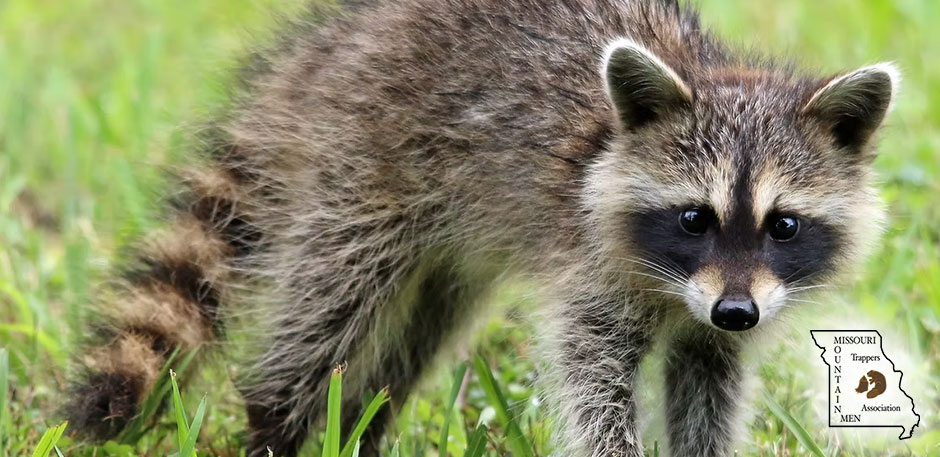Skunk - Commonly Trapped Furbearer
UTILIZING OUR ABUNDANT MISSOURI WILDLIFE

Skunk
Fast Facts
- Striped Skunk weight: up to ~8 pounds
- Spotted Skunk weight: ~2-3 pounds
- Teeth: 34
- Vision (striped): Poor beyond 2-3 feet
- Unique Behavior (spotted): Can do handstands before spraying
- Hibernation: None (may stay in dens during deep snow)
- Life Span: ~6 years
Average adult striped skunks weigh 6-8 pounds, though body weight might be significantly heavier in late fall, as the skunks attain layers of fat to sustain themselves through winter. Spotted skunks are much smaller, usually weighing 2-3 pounds. Males of both types are slightly heavier than females. :contentReference[oaicite:0]{index=0}
Description
All striped skunks have a white stripe on the head between the nose and the forehead. A white crest, or cap, is typical on the top of the head, and a continuing white stripe usually divides the shoulder area into two stripes that continue along the sides of the animal into the tail. The amount of white coloration varies with the individual skunk, with some having broad stripes, narrow stripes, short stripes, or even none at all. :contentReference[oaicite:1]{index=1}
Spotted skunks have a white patch on the forehead area and a broken pattern of white striping that appears as blotches or spots of white in the otherwise black fur. The amount of white also varies with individuals. Some spotted skunks have mostly black tails, while others can be mostly white. :contentReference[oaicite:2]{index=2}
The scent glands in skunks are well developed. Musk, or essence, can be sprayed repeatedly as a defense. The yellowish compound is powerful in all skunks and contains sulfuric acid, which can cause temporary blindness in other animals and humans. :contentReference[oaicite:3]{index=3}
Striped and spotted skunks have five toes on each foot. The front feet have relatively long claws to assist in digging for grubs and other food. Skunks have 34 teeth, including four pointed, sharp canines. :contentReference[oaicite:4]{index=4}
Skunk fur is rather long—and longer on tails than on bodies. Underfur is white under the white guard hairs and grayish under the black-colored guard hairs. :contentReference[oaicite:5]{index=5}
Reproduction
Striped skunks often breed during February, and the males do a great deal of traveling at this time to locate females. Many times, females live in an underground den through the winter with only one male, who will protect the communal den from invasion by another male. :contentReference[oaicite:6]{index=6}
Gestation periods for striped skunks are usually 63 days, and all bred females seek solitary dens to raise their young by themselves. Litter sizes of striped skunks are usually 6-8, except for the first litter, which usually numbers 4. :contentReference[oaicite:7]{index=7}
The eastern species of spotted skunk usually breeds in April. Gestation is about 60 days before 3-5 young are born. The western species breeds in September or October, and gestation is about 140 days due to a delayed implantation process. :contentReference[oaicite:8]{index=8}
The new litter of striped and spotted skunks begins following their mothers at 6 weeks of age. Travel is often single-file, and the young are quick to learn to find grubs and insects. The family unit breaks up as the young reach 3 months of age. Dispersal is not significant, and the juvenile females may continue to share their mother’s den. Males are evicted and then look for other dens. :contentReference[oaicite:9]{index=9}
Habits
Striped skunks are mostly nocturnal, doing most of their hunting and traveling during the night. Territory sizes are somewhat small, and overlapping or sharing territories is normal, as the species does not defend its territory against others of the same species. Home ranges are considered to be about 4 square miles, but most skunks don’t travel more than a mile or so in one night’s activity. :contentReference[oaicite:10]{index=10}
Communal dens are common during the time of year that young are not being raised, and 6-20 skunks might share a den with one male at a time. :contentReference[oaicite:11]{index=11}
Striped skunks have poor vision at more than 2-3 feet. A keen sense of smell enables them to easily locate foods, which vary with the season. Not being very swift, skunks rely on digging and scent for prey detection rather than speed. Their defense (spraying) reduces the need to outrun predators. :contentReference[oaicite:12]{index=12}
Skunks often give ample warning before they spray their musk: they lift their tail, turn their back toward danger, sometimes pound their front feet in a drum-like fashion. :contentReference[oaicite:13]{index=13}
Range
Striped skunks are found in all the North American states except Alaska and Hawaii. Populations of spotted skunks are sporadic and inconsistent in most areas. :contentReference[oaicite:14]{index=14}
General
Although skunks are not well liked by people, they do provide valuable services by controlling high numbers of injurious insects in their larval stages. The diet of spotted skunks is almost entirely beneficial to humans. Both striped and spotted skunks can raid chicken houses; the worst offender is usually the spotted skunk because it can climb easily to gain access. :contentReference[oaicite:15]{index=15}
Spotted skunks also dig up lawns in pursuit of grubs, which can be an annoyance. The concern of rabies in striped skunks is very real. More striped skunks than all other species combined are tested positive for rabies each year in Missouri, and this disease is always a threat to livestock, pets, and humans. Six years of age is considered old for striped and spotted skunks. :contentReference[oaicite:16]{index=16}
Contact Missouri Trappers Association
Get in touch with the Missouri Trappers Association by filling out the contact form. We appreciate your support!
For questions regarding your membership, please call
Joslyn Search: (660)292-1911


